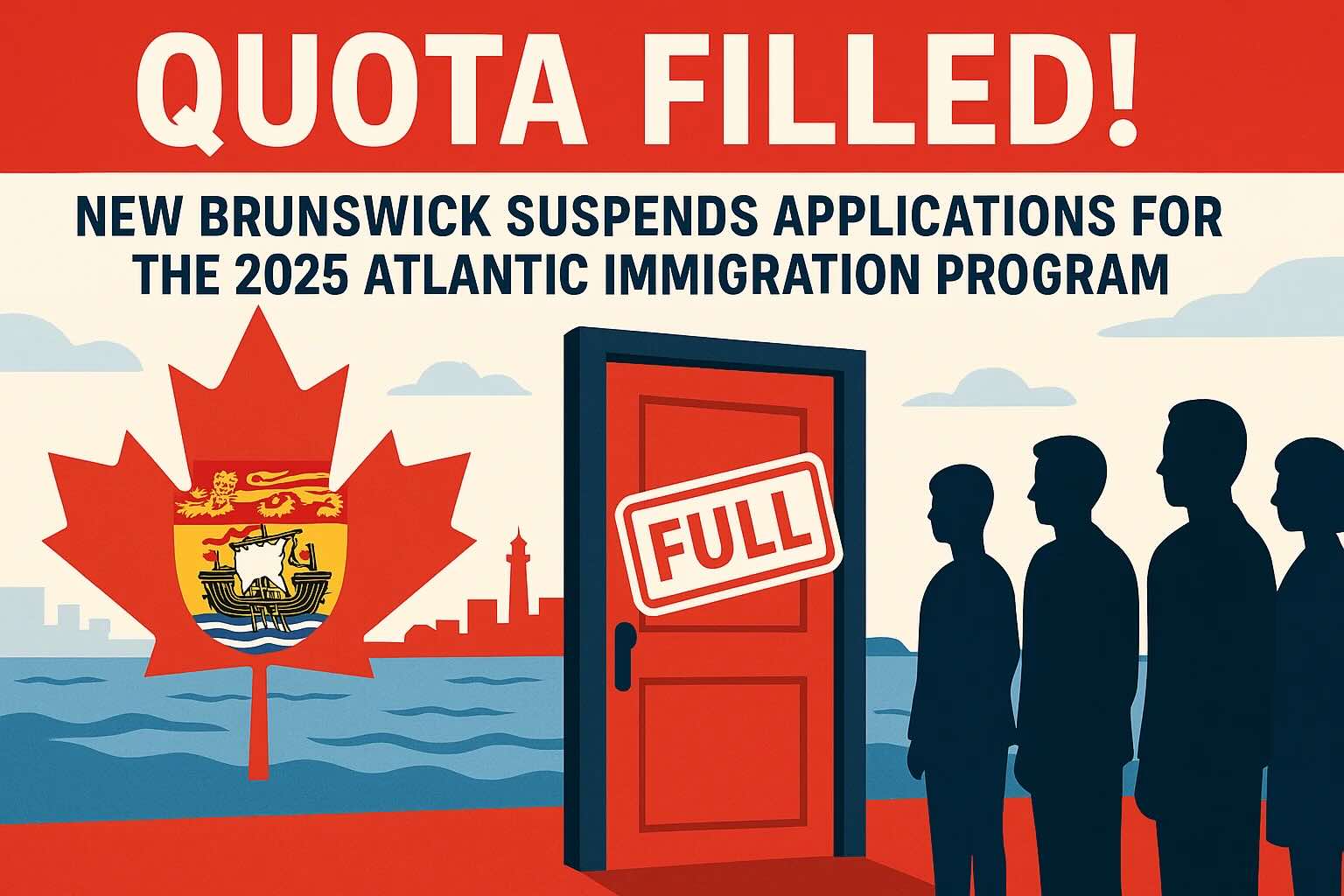On March 5th and 6th, 2025, New Brunswick, Canada, held its first provincial nominee draw of the year, aimed at inviting candidates who meet the province's labor market needs. This draw was conducted against the backdrop of a significant reduction in the province's 2025 immigration quota, highlighting New Brunswick's determination to adjust its immigration strategy and optimize the direction of talent recruitment.
It is understood that New Brunswick received a total of 2,750 provincial nominee allocations this year, of which 1,500 are allocated to the New Brunswick Provincial Nominee Program (NBPNP), and the remaining 1,250 are used for the Atlantic Immigration Program (AIP).
This draw was conducted through two streams under the NBPNP: the "New Brunswick Skilled Worker—New Brunswick Experience pathway" and the "New Brunswick Skilled Worker—New Brunswick Graduates pathway," prioritizing candidates in the following occupational categories:
- Healthcare
- Education and Social and Community Services
- Construction Industry
In this draw, a total of 498 provincial nominee invitations (ITAs) were issued. The NBPNP did not disclose the minimum score for this draw.
As of 2025, the New Brunswick Skilled Worker category is divided into three streams:
- New Brunswick Experience: Applicants must currently be employed full-time (non-seasonal position) in New Brunswick by a qualified employer, and the employer must be willing to support their application. In addition, applicants must reside in the province and have worked full-time for the same employer for at least six consecutive months.
- New Brunswick Graduates: Applicants must have completed a program eligible for a Post-Graduation Work Permit (PGWP) at a designated learning institution (DLI) in New Brunswick, and be currently employed full-time (non-seasonal position) by a qualified New Brunswick employer, or have received a job offer for such a position, and the employer must be willing to support their application.
- New Brunswick Priority Occupations: Applicants must have received a full-time (non-seasonal) job offer from a qualified New Brunswick employer, the job offer must be the result of a recruitment activity led by the New Brunswick government, and the position must fall under a priority NOC code specified in the program guide. Applicants must also have at least one year of work experience related to the position.
NBPNP Adjustments in 2025
To effectively utilize limited provincial nominee allocations, New Brunswick has made significant adjustments to several immigration programs, including:
1. New Brunswick Express Entry Stream
As of March 5, 2025, Expressions of Interest (EOI) are accepted through the following two pathways:
- New Brunswick Employment Pathway
- New Brunswick Interest Pathway
Program Discontinued: The New Brunswick Student Connection Pathway will no longer be open in 2025.
Occupations Not Considered: NOC 12200 (Accounting technicians and bookkeepers), NOC 13110 (Administrative assistants), NOC 60020 (Retail and wholesale trade managers), NOC 60030 (Restaurant and food service managers), NOC 62010 (Retail sales supervisors), NOC 62020 (Food service supervisors), NOC 63200 (Cooks), NOC 63202 (Bakers).
2. New Brunswick Strategic Initiative Stream
Applications are suspended for 2025 because the province currently has a sufficient number of applications and is no longer accepting new Expressions of Interest (EOI). The "New Brunswick Exploratory Visit" connection, which was suspended in November 2024, will also not be resumed in 2025.
3. New Brunswick Skilled Worker Stream
Reorganized into three pathways:
- New Brunswick Experience
- New Brunswick Graduates
- New Brunswick Priority Occupations (currently not accepting applications).
Similar to the Express Entry Stream, this category also lists a series of occupations that are not considered, covering multiple fields such as retail, food service, hospitality, and labor.
Policy Impact Analysis
This adjustment by New Brunswick highlights the core trend of Canadian provincial immigration policies—prioritizing filling key labor shortages under limited quota conditions through targeted occupation lists and employer-driven mechanisms. Applicants in fields such as healthcare, education, and construction will gain significant advantages, while immigration channels for traditional service industry positions will be further narrowed. Potential applicants are advised to pay close attention to the adaptability of occupation codes and plan ahead for employment or study pathways within the province to enhance their competitiveness.









